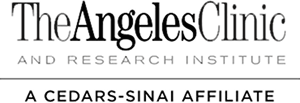Introduction
Stereotactic breast biopsy is an important procedure for diagnosing breast cancer. It is a noninvasive method of obtaining a breast tissue sample for biopsy. A biopsy is an examination to determine if the sample is cancerous or not. Stereotactic breast biopsy is a relatively painless short outpatient procedure and recovery time is brief.
Traditional biopsies are invasive surgical procedures that remove a suspicious lump and some of the tissue around it. The procedure is performed with general anesthesia and the incision is closed with stitches, possibly leaving a scar. As a result of the surgery, the tissue area may appear distorted on future mammograms. For some women, stereotactic breast biopsy is an alternative to traditional open surgical biopsy methods.
Stereotactic breast biopsy uses a special mammography machine and computerized calculations to pinpoint the suspicious area of breast tissue. It is especially helpful for diagnosing areas of breast tissue that appear suspicious on a mammogram, but are not palpable with a clinical breast examination. The procedure obtains a tissue sample, while leaving the breast intact.
Requiring only local anesthesia, tissue samples are removed with a needle. Stereotactic breast biopsy does not require stitches and does not leave a scar. The stereotactic breast biopsy method does not distort the breast tissue or make it difficult to read future mammograms. Further, stereotactic breast biopsy methods are as accurate as open biopsies.
Treatment
Stereotactic breast biopsy is performed as an outpatient procedure with local anesthesia. Depending on the facility, you may be seated in a chair or positioned face down on a table. Your breast will be placed between two plates, similar to what is used for a mammogram. One plate has a window through which the biopsy is performed. A series of images will be taken and interpreted by a computer to produce a 3D picture and pinpoint the specific location of the lesion.
A variety of minimally invasive biopsy methods may be used to remove the tissue samples. Various sized needles may be used alone or with vacuum suction assistance. A small metal clip may be left at the biopsy site to mark the exact location in case further treatment is needed for cancer.
Once the sample is taken, no stitches are required because there is no incision. You should avoid strenuous activities for a day, but may return to your regular activities after that. It may take a few days for a pathologist to process your specimens. Your doctor will contact you when he or she has received the results.


